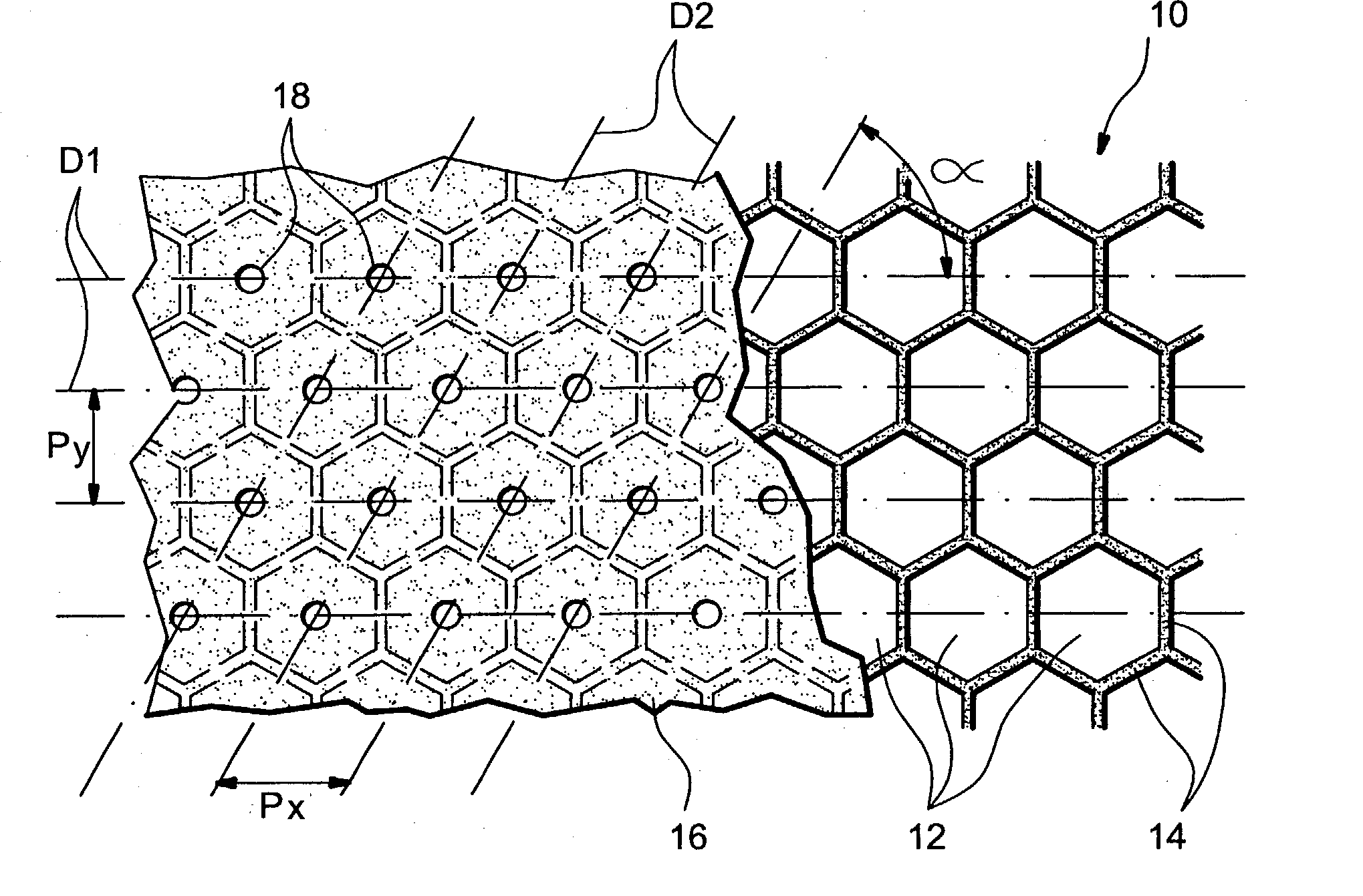Perforated adhesive film and its manufacturing process
a technology of perforated adhesive film and manufacturing process, which is applied in the direction of film/foil adhesives, transportation and packaging, chemistry apparatus and processes, etc., can solve the problems of adhesive film bursting, method cannot be used, and one face of cellular core used satisfactorily
- Summary
- Abstract
- Description
- Claims
- Application Information
AI Technical Summary
Benefits of technology
Problems solved by technology
Method used
Image
Examples
Embodiment Construction
[0030] As described above, the invention relates to a perforated adhesive film that will be used to fix a wall on at least one face of a cellular structure in order to form a sandwich panel.
[0031] More precisely, the adhesive film perforated according to the invention may be placed on a plane or curved cellular structure and comprising cells with arbitrary shapes and dimensions, that may or may not be laid out according to a regular network.
[0032] As illustrated for example in FIG. 1, in the case of a NIDA honeycomb type of cellular structure 10 formed of hexagonal cells 12 adjacent to each other in a regular network and separated by partitions 14, the perforated adhesive film 16 conform with the invention comprises several holes 18 arranged such that at least one hole 18 and not more than three holes 18 are facing each of the cells 14.
[0033] The holes 18 will facilitate migration of the glue towards the ends of the partitions 14 of the cells 12 when the adhesive film 12 is heated. ...
PUM
| Property | Measurement | Unit |
|---|---|---|
| diameter | aaaaa | aaaaa |
| angle | aaaaa | aaaaa |
| angle | aaaaa | aaaaa |
Abstract
Description
Claims
Application Information
 Login to View More
Login to View More - R&D
- Intellectual Property
- Life Sciences
- Materials
- Tech Scout
- Unparalleled Data Quality
- Higher Quality Content
- 60% Fewer Hallucinations
Browse by: Latest US Patents, China's latest patents, Technical Efficacy Thesaurus, Application Domain, Technology Topic, Popular Technical Reports.
© 2025 PatSnap. All rights reserved.Legal|Privacy policy|Modern Slavery Act Transparency Statement|Sitemap|About US| Contact US: help@patsnap.com



